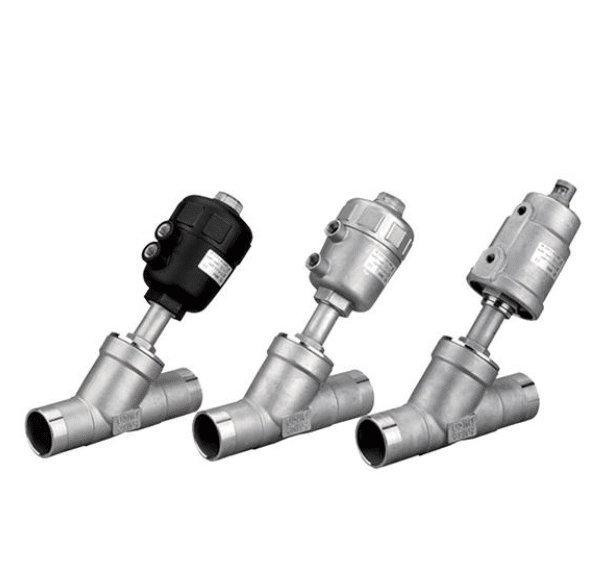Mar 01, 2025
When selecting a Pneumatic Angle Seat Valve, it’s essential to carefully consider several factors to ensure the valve performs efficiently and reliably within your specific system.
Below, we outline the key criteria for selecting the right valve, followed by the advantages of using an angle seat valve.

The first consideration when choosing a Pneumatic Angle Seat Valve is the valve function. NC (Normally Closed) valves remain closed when no air pressure is applied and open when the pneumatic signal is activated.
In contrast, NO (Normally Open) valves remain open without pneumatic activation and close when pressure is applied. Understanding the operational needs of your system will help you choose the appropriate function for your application.
The connection type and size are critical for ensuring proper integration with your piping system.
Pneumatic Angle Seat Valves are available in a range of connection types, including threaded, flanged, and push-in, each offering different installation benefits depending on the system configuration.
The size of the valve must match the pipeline dimensions, ensuring a tight seal and optimal flow performance.
Choosing the right housing and seal materials is crucial for the valve’s durability and performance in various conditions.
Pneumatic Angle Seat Valves are available in materials like stainless steel, brass, and aluminum, offering excellent resistance to corrosion, wear, and high temperatures.
The seals, typically made from materials like NBR, EPDM, or FKM, should be selected based on the media being controlled and the environmental conditions such as temperature and chemical exposure.
The operational limits of your Pneumatic Angle Seat Valve depend on the system's temperature, pressure, and flow conditions. It's important to select a valve that can handle the maximum temperature and pressure within your application.
Additionally, consider the flow rate required for your system and ensure that the valve's flow capacity meets or exceeds the system’s needs. This ensures consistent and reliable performance without compromising efficiency or safety.
The flow direction in a Pneumatic Angle Seat Valve determines how the valve should be installed in the system.
Angle seat valves are typically designed to allow flow in a specific direction, either straight-through or angle, providing greater flow efficiency and minimizing resistance.
It’s essential to install the valve according to the manufacturer's recommendations to avoid any disruptions in the flow path and maintain optimal performance.
Pneumatic Angle Seat Valves offer several advantages over traditional valve types, making them ideal for many industrial applications. Here are the key benefits:
Angle seat valves are designed to handle higher flow rates compared to conventional globe valves. Their angled design allows for more direct flow, reducing resistance and enabling higher flow capacities while maintaining efficient control.
These valves feature a compact and space-saving design, which makes them suitable for applications where space is limited. Their robust construction ensures that they can handle demanding conditions despite their size.
With the use of high-quality materials such as stainless steel and durable seals, Pneumatic Angle Seat Valves offer excellent resistance to wear, corrosion, and harsh operating conditions.
This ensures long-lasting performance and reduces maintenance costs over time.
Thanks to their precision engineering, angle seat valves provide accurate control of media flow, pressure, and temperature, making them an excellent choice for processes that require consistent and reliable operation.
Whether you’re handling liquids, gases, or steam, Pneumatic Angle Seat Valves are versatile enough to handle various media types.
Their adaptability to different industries and environments makes them a popular choice for pneumatic and hydraulic systems alike.
Pneumatic angle seat valves operate efficiently, requiring less air consumption for actuation. This reduces the overall energy demand in your system, contributing to lower operational costs.
Selecting the right Pneumatic Angle Seat Valve involves understanding key factors like valve function, connection type, material selection, and system specifications.
As a trusted Pneumatic Angle Seat Valve supplier, we offer a range of high-quality valves designed to meet the diverse needs of your systems.
Our valves are engineered for reliability, efficiency, and performance, ensuring that you get the most out of your investment.
Reach out to us today to learn more about how our custom solutions can meet your specific requirements.
You May Interest In
FOKCA ©1998-2025 All Rights Reserved Sitemap